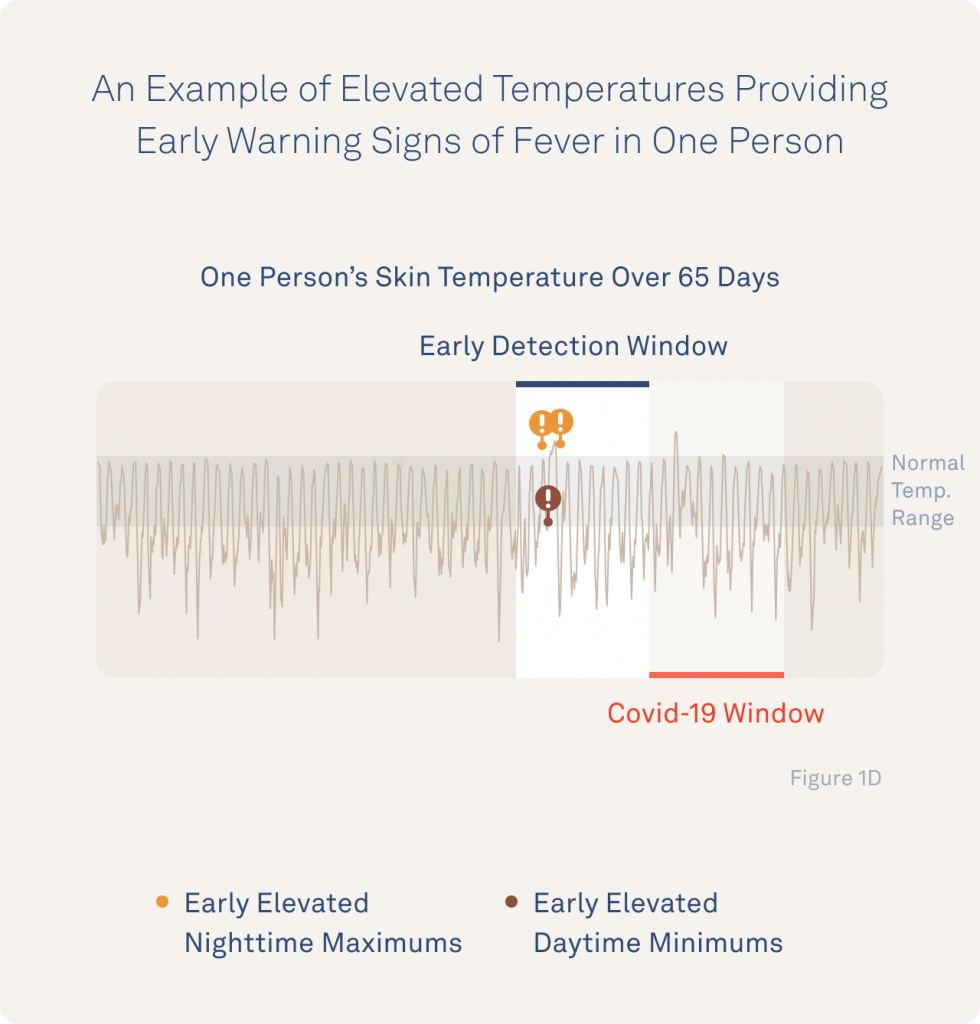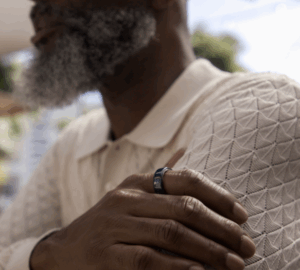Early results from a large-scale COVID-19 study conducted at the University of California, San Francisco (UCSF), TemPredict, reveal that the Oura Ring continuous temperature monitoring could make it an effective tool for fever monitoring and early illness detection.
Check out the full paper in: Nature – Scientific Reports.
Why This Matters
Detecting symptoms early, especially in individuals who may not be aware that they have COVID-19, enables people to get tested and self-isolate earlier — helping stop the spread.
Why Temperature is Crucial
Analysis of 50 COVID-19 cases reveals that Oura Ring temperature data can spot pre-symptomatic signs of a fever in 76% of people by flagging when an individual is deviating from their normal temperature patterns.

What’s Next?
The researchers’ next step is moving towards testing an algorithm that could alert Oura Ring wearers when their resting heart rate, heart rate variability (HRV), temperature, and/or respiratory rate data show concerning symptoms — empowering individuals to seek out appropriate help.
Oura’s CEO, Harpreet Singh Rai, describes the Oura Ring potential to make change best:
“Every year, around cold and flu season, users reach out to us saying that Oura caught their fever or let them know that they were about to get sick. We hear often that users see their Readiness score’s fall before they feel symptoms of being ill. The initial TemPredict results are reinforcing this phenomenon. According to the CDC, you can be infectious with COVID 2-3 days before you’re symptomatic.
We see tremendous value for not only our partners like the NBA but also for every Oura user as they try to manage COVID-19 and other illnesses. If we can catch signs of illness in that 2-3 day window, Oura can play a significant role in stopping the spread.”
To read more about the results, take a look at this research summary.










